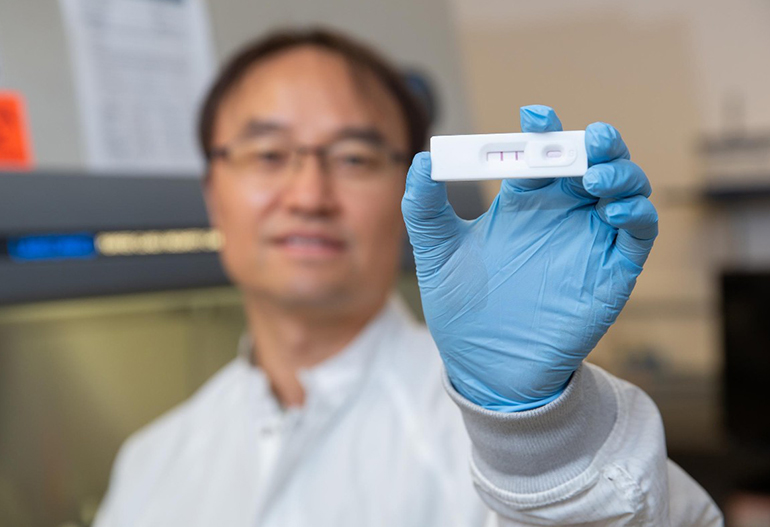Researchers at the University of Cincinnati have developed a lateral flow assay that can detect bacterial toxins from Porphyromonas gingivalis, the causative bacteria for gingivitis. The technology could make it easier and faster to identify early-stage gingivitis, which can lead to periodontitis and eventual tooth loss, as well as contributing to a variety of other diseases such as stroke and heart disease. The lateral flow assay requires a small saliva sample, and can provide results very quickly, but does require the saliva sample to be pre-treated with potato starch to deactivate salivary amylase, an enzyme that can interfere with the assay.
The humble lateral flow assay grew in prominence during the COVID-19 pandemic as a quick at-home method to check your COVID status, but this technology was already a staple of such applications as pregnancy testing. Now, researchers are increasingly aware of its utility as a rapid point-of-care diagnostic technology and are beginning to apply it to the detection of other diseases. In this instance, these researchers at the University of Cincinnati have developed a lateral flow assay to detect the bacteria responsible for gingivitis.
Gingivitis is caused by P. gingivalis, which typically starts as mild gum inflammation. However, this can spread to other parts of the periodontal tissue, causing damage to soft tissue and bone that stabilize our teeth. This damage can eventually lead to tooth loss. Moreover, researchers have also linked P. gingivalis to other conditions, including cardiovascular diseases, rheumatoid arthritis, and even neurodegenerative diseases such as Alzheimer’s disease.
There are lab-based tests available to detect P. gingivalis, but compared with a lateral flow test, they are complex, slow, expensive, and lack portability. If a diagnostic technique is too expensive, time consuming and inconvenient, then patients or clinicians will only tend to seek it out or recommend it if symptoms have already developed. However, for routine testing and health screening, a convenient, rapid, and point-of-care test is much preferred. A lateral flow test for gingivitis, for example, could be administered by a dentist every time someone undergoes a routine dental checkup.
The assay detects a bacterial endotoxin released into the saliva by P. gingivalis through a simple immunoassay, whereby antibodies capture and identify the toxin. An enzyme present in saliva called amylase can interfere with this, so the assay requires the saliva to be pretreated with potato starch to deactivate this enzyme. In the future, you may be able to use such lateral flow assays to conveniently detect a wide variety of pathogens and biomarkers, and you can thank SARS-CoV-2 for the privilege.
Study in journal Sensors & Diagnostics: Salivary endotoxin detection using combined mono/polyclonal antibody-based sandwich-type lateral flow immunoassay device

